Glycyrrhiza uralensis flavonoids present in anti-asthma formula, ASHMI™, inhibit memory Th2 responses in vitro and in vivo
- PMID: 23165939
- PMCID: PMC3593755
- DOI: 10.1002/ptr.4862
Glycyrrhiza uralensis flavonoids present in anti-asthma formula, ASHMI™, inhibit memory Th2 responses in vitro and in vivo
Abstract
Allergic asthma is associated with Th2-mediated inflammation. Several flavonoids were isolated from Glycyrrhiza uralensis, one of the herbs in the anti-asthma herbal medicine intervention. The aim of this investigation was to determine whether Glycyrrhiza uralensis flavonoids have inhibitory effects on memory Th2 responses in vitro and antigen-induced Th2 inflammation in vivo. The effects of three Glycyrrhiza uralensis flavonoids on effector memory Th2 cells, D10.G4.1 (D10 cells), were determined by measuring Th2 cytokine production. Isoliquiritigenin, 7, 4'-dihydroxyflavone (7, 4'-DHF) and liquiritigenin significantly suppressed IL-4 and IL-5 production in a dose-dependent manner, 7, 4'-DHF being most potent. It was also evaluated for effects on D10 cell proliferation, GATA-3 expression and IL-4 mRNA expression, which were suppressed, with no loss of cell viability. Chronic treatment with 7, 4'-DHF in a murine model of allergic asthma not only significantly reduced eosinophilic pulmonary inflammation, serum IgE levels, IL-4 and IL-13 levels, but also increased IFN-γ production in lung cell cultures in response to antigen stimulation.
Keywords: D10. G 4.1; GATA-3; Glycyrrhiza uralensis; Th2 cytokines; flavonoids; murine model of asthma.
Copyright © 2012 John Wiley & Sons, Ltd.
Conflict of interest statement
Authors’ disclosure statement: Drs. Xiu-Min Li, Hugh Sampson and Ming Chun Wen are named inventors of a patent for the use of ASHMI (PCT/US05/08600 for ASHMI) and have shares of Herbal Spring LLC, which has exclusive rights to the patent. The other authors have no financial interests to disclose.
Figures

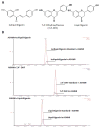
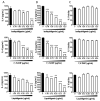
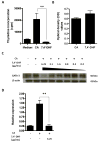
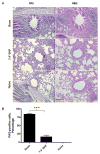
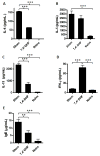

Similar articles
-
Constituents of the anti-asthma herbal formula ASHMI(TM) synergistically inhibit IL-4 and IL-5 secretion by murine Th2 memory cells, and eotaxin by human lung fibroblasts in vitro.J Integr Med. 2013 May;11(3):195-205. doi: 10.3736/jintegrmed2013029. J Integr Med. 2013. PMID: 23743163 Free PMC article.
-
Anti-Asthma Simplified Herbal Medicine Intervention-induced long-lasting tolerance to allergen exposure in an asthma model is interferon-γ, but not transforming growth factor-β dependent.Clin Exp Allergy. 2010 Nov;40(11):1678-88. doi: 10.1111/j.1365-2222.2010.03545.x. Clin Exp Allergy. 2010. PMID: 20573156 Free PMC article.
-
Ganoderic acid C1 isolated from the anti-asthma formula, ASHMI™ suppresses TNF-α production by mouse macrophages and peripheral blood mononuclear cells from asthma patients.Int Immunopharmacol. 2015 Aug;27(2):224-31. doi: 10.1016/j.intimp.2015.05.018. Epub 2015 May 21. Int Immunopharmacol. 2015. PMID: 26004313 Free PMC article.
-
A Review: The Pharmacology of Isoliquiritigenin.Phytother Res. 2015 Jul;29(7):969-77. doi: 10.1002/ptr.5348. Epub 2015 Apr 24. Phytother Res. 2015. PMID: 25907962 Review.
-
Linking GATA-3 and interleukin-13: implications in asthma.Inflamm Res. 2014 Apr;63(4):255-65. doi: 10.1007/s00011-013-0700-6. Epub 2013 Dec 22. Inflamm Res. 2014. PMID: 24363163 Review.
Cited by
-
Advanced Molecular Knowledge of Therapeutic Drugs and Natural Products Focusing on Inflammatory Cytokines in Asthma.Cells. 2019 Jul 5;8(7):685. doi: 10.3390/cells8070685. Cells. 2019. PMID: 31284537 Free PMC article. Review.
-
Perspectives on the Role of Isoliquiritigenin in Cancer.Cancers (Basel). 2021 Jan 1;13(1):115. doi: 10.3390/cancers13010115. Cancers (Basel). 2021. PMID: 33401375 Free PMC article. Review.
-
Traditional Chinese Medicine for Pediatric Allergic Diseases.Curr Allergy Asthma Rep. 2025 Jul 31;25(1):33. doi: 10.1007/s11882-025-01208-7. Curr Allergy Asthma Rep. 2025. PMID: 40742400 Free PMC article. Review.
-
TF-343 Alleviates Diesel Exhaust Particulate-Induced Lung Inflammation via Modulation of Nuclear Factor-κB Signaling.J Immunol Res. 2019 Oct 30;2019:8315845. doi: 10.1155/2019/8315845. eCollection 2019. J Immunol Res. 2019. PMID: 31781683 Free PMC article.
-
Mediterranean-Type Diets as a Protective Factor for Asthma and Atopy.Nutrients. 2022 Apr 27;14(9):1825. doi: 10.3390/nu14091825. Nutrients. 2022. PMID: 35565792 Free PMC article. Review.
References
-
- Akinbami LJ, Moorman JE, Garbe PL, et al. Status of childhood asthma in the United States, 1980-2007. Pediatrics. 2009;123(Suppl 3):S131–S145. - PubMed
-
- American Academy of Allergy AaI. Asthma statistics 2010
-
- Barnes PJ. Role of GATA-3 in allergic diseases. Curr Mol Med. 2008;8:330–334. - PubMed
-
- Blander JM, Sant’Angelo DB, Metz D, et al. A pool of central memory-like CD4 T cells contains effector memory precursors. J Immunol. 2003;170:2940–2948. - PubMed
-
- Chen ML, Lin BF. Effects of triterpenoid-rich extracts of Ganoderma tsugae on airway hyperreactivity and Th2 responses in vivo. Int Arch Allergy Immunol. 2007;143:21–30. - PubMed
Publication types
MeSH terms
Substances
Grants and funding
LinkOut - more resources
Full Text Sources
Other Literature Sources
Medical

